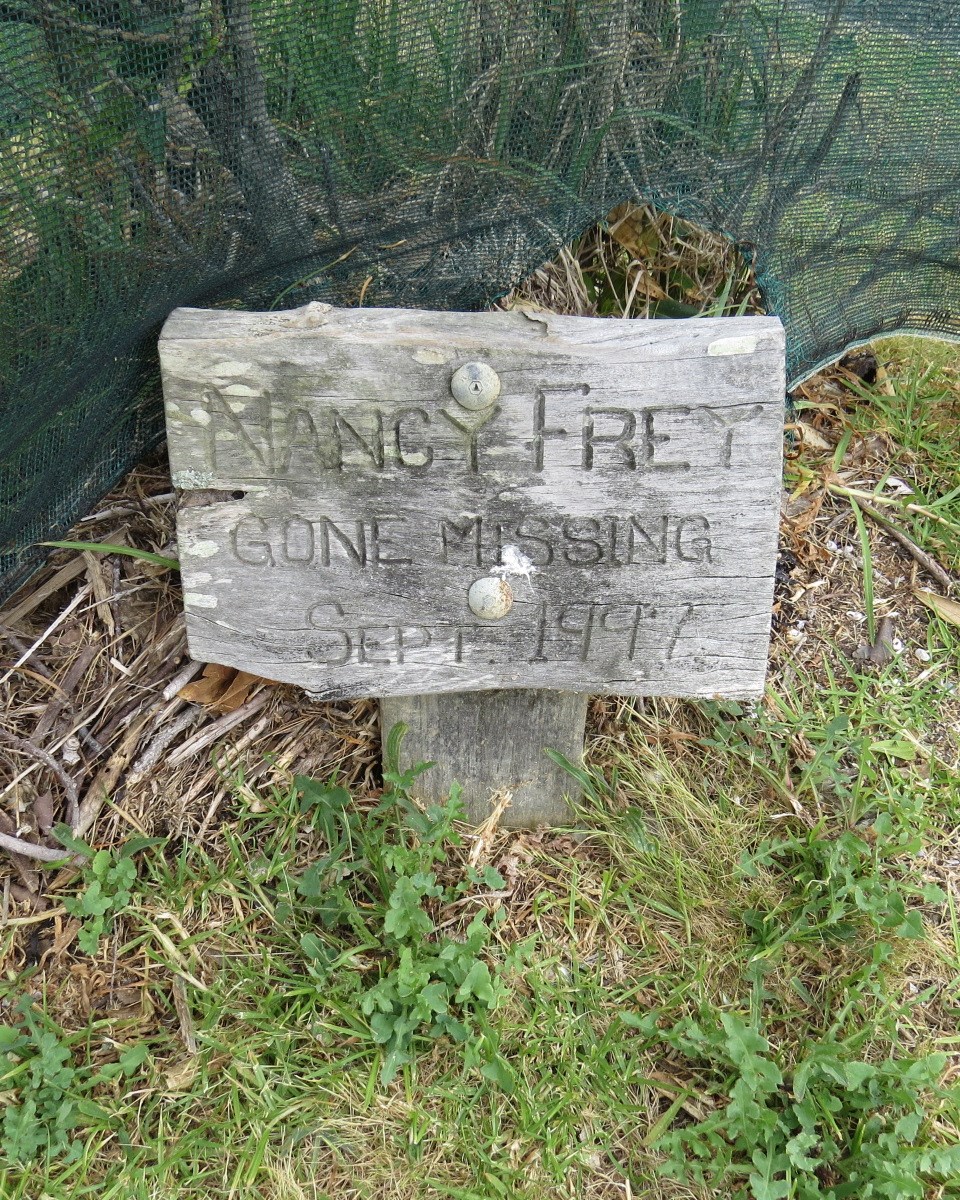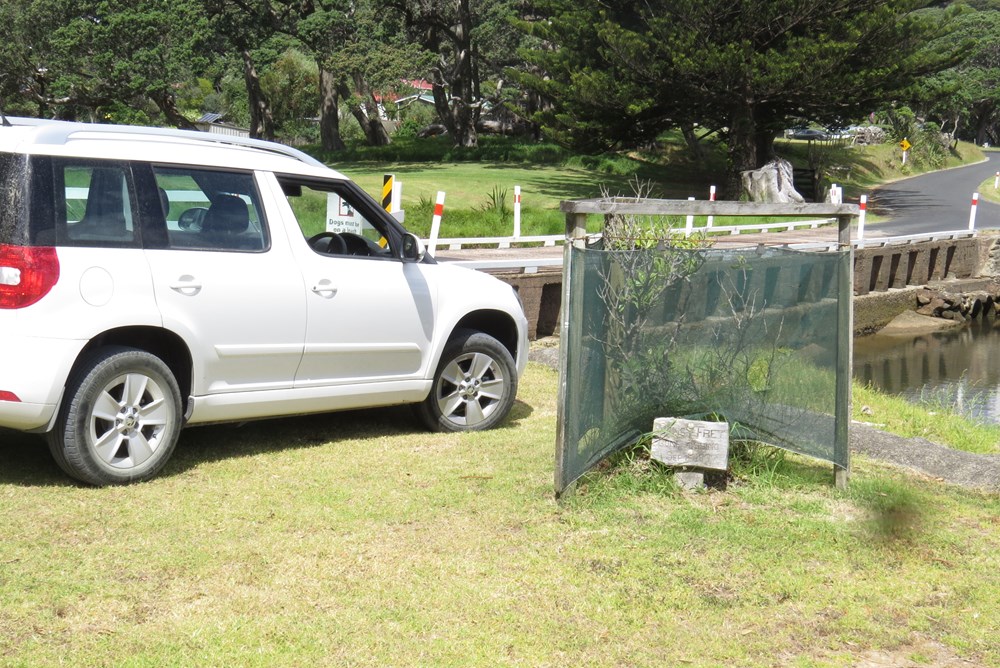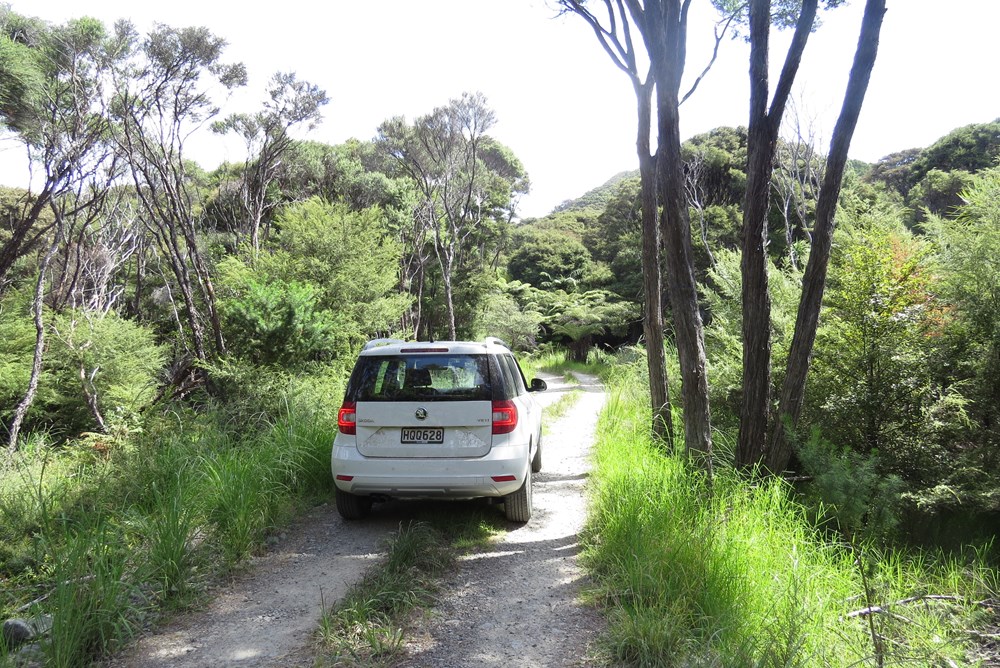PAUL CHARMAN CONTINUES HIS ACCOUNT OF A ROAD TRIP TO DELVE INTO SOME STORIES FROM THE DARKER SIDE OF A GULF ISLAND
I took a Skoda Yeti to Great Barrier Island recently, a friendly place where many folk say they don’t bother to lock their doors at night.
But this island paradise has held some dark secrets over the years.
In 1997 Nancy Frey-Hershey disappeared at Schooner Bay and in 1999 Claris recluse Colin Goode was found dead in his home.
Police still hope to complete the files on these cases but, as I found on my travels, few reminders of the people concerned now remain.
I spent an afternoon driving Barrier roads to gather information on the cold cases, the Yeti’s ground clearance and great visibility suiting the winding, narrow island lanes.
And as east European cars haven’t been seen much on the island since the Lada days of the 1990s, my Skoda drew plenty of stares.
Nancy Frey-Hershey
In a small seaside reserve off Shoal Bay Rd, Great Barrier Island, a wooden plaque stands beside a squat pohutukawa. It reads, “Nancy Frey Gone Missing Sep 1997”.
I parked the Yeti and examined the only memorial to the popular Barrier resident.

Not much to see, just that plate and a pohutukawa which hasn’t grown since being planted in the late 1990s.
The American woman was in her late 40s when she vanished. Many theories exist about how she disappeared, including a baseless one that the disappearance was linked to the Scott Watson case.
Officially Nancy died on or about September 25, 1997 “from unascertained causes”, so her police file remains open.
Barrier folk I met recalled somebody who could massage backs and ease pain, a woman who fitted into island life well and was keen to acquire residence in New Zealand.
At her inquest Auckland Coroner Mate Frankovich called her “forward-looking ... with no suicidal intentions or signs of depression”. Police confirmed she had no known enemies.
Nancy’s absence was reported to police on September 26, though inquiries showed she’d missed appointments the previous day.
The local constable and volunteers began searching, turning up some clothing partway down a steep cliff about 350m from Nancy’s Schooner Bay home.
A later search by Auckland detectives revealed her front door was open and her watch and other valuables were still in the house.
There was no suicide note or any signs of violence. A half-finished letter, addressed to a German national, lay on the table and some stew in a pot on the coal range.
 The pohutukawa meant as a memorial to Nancy hasn’t grown since it was planted in the late 1990s.
The pohutukawa meant as a memorial to Nancy hasn’t grown since it was planted in the late 1990s.
The clothing found halfway down the cliff face — including a cardigan, beret and gumboots — was positively identified as Nancy’s. The cardigan had patches of dirt and its sleeves were pulled inside out.
Despite exhaustive efforts by the police no body was ever found and after two years it was concluded Nancy was dead.
Mr Frankovich considered the scenario that she had toppled to her death from the top of the cliff, sustained serious injuries and drowned in the sea below.
“However, that raises the question of how her cardigan and gumboots fell off during the fall.
“Secondly, had the deceased been scaling the cliff and having reached a given point, then shed herself of her gumboots and cardigan?”
But because of rain at the time he doubted this, and asked why she would be wearing gumboots to climb a cliff.
“I cannot exclude the two previous scenarios. Nevertheless I cannot exclude the possibility of foul play. It may well be that her clothes were planted on the cliff face to give the impression that the deceased had fallen to her death.”
Colin Goode
 The decomposing body of Colin Michael Goode, 51, was found on June 30, 1999, in his isolated home near Claris. His right hand was missing and police treated his death as a homicide. No cause of death could be established.
The decomposing body of Colin Michael Goode, 51, was found on June 30, 1999, in his isolated home near Claris. His right hand was missing and police treated his death as a homicide. No cause of death could be established.
Mr Goode, a former gardener with Auckland City Council parks and a known cannabis grower, had last been seen that April. He had minimal contact with the outside world.
His body was lying on a double bed in the master bedroom and remains of his dog were also in the room.
Police found two rifles, a .303 and a .22, in the bedroom but said Mr Goode did not die from gunshot wounds.
Mr Goode had complained in 1991 that he had been assaulted in his home by armed Mongrel Mob members demanding 13kg of cannabis they claimed he had.
They allegedly robbed him of a kilogram of cannabis and $1240.
The officer in charge of the homicide investigation, Detective Superintendent Andy Lovelock, told the coroner’s court some residents of Great Barrier knew more than they revealed.
Great Barrier police officers, Senior Constables Roger Bright and Kylie Robbins, would welcome further information.
■Paul Charman’s trip to Great Barrier was sponsored by Sealink and Skoda NZ.




